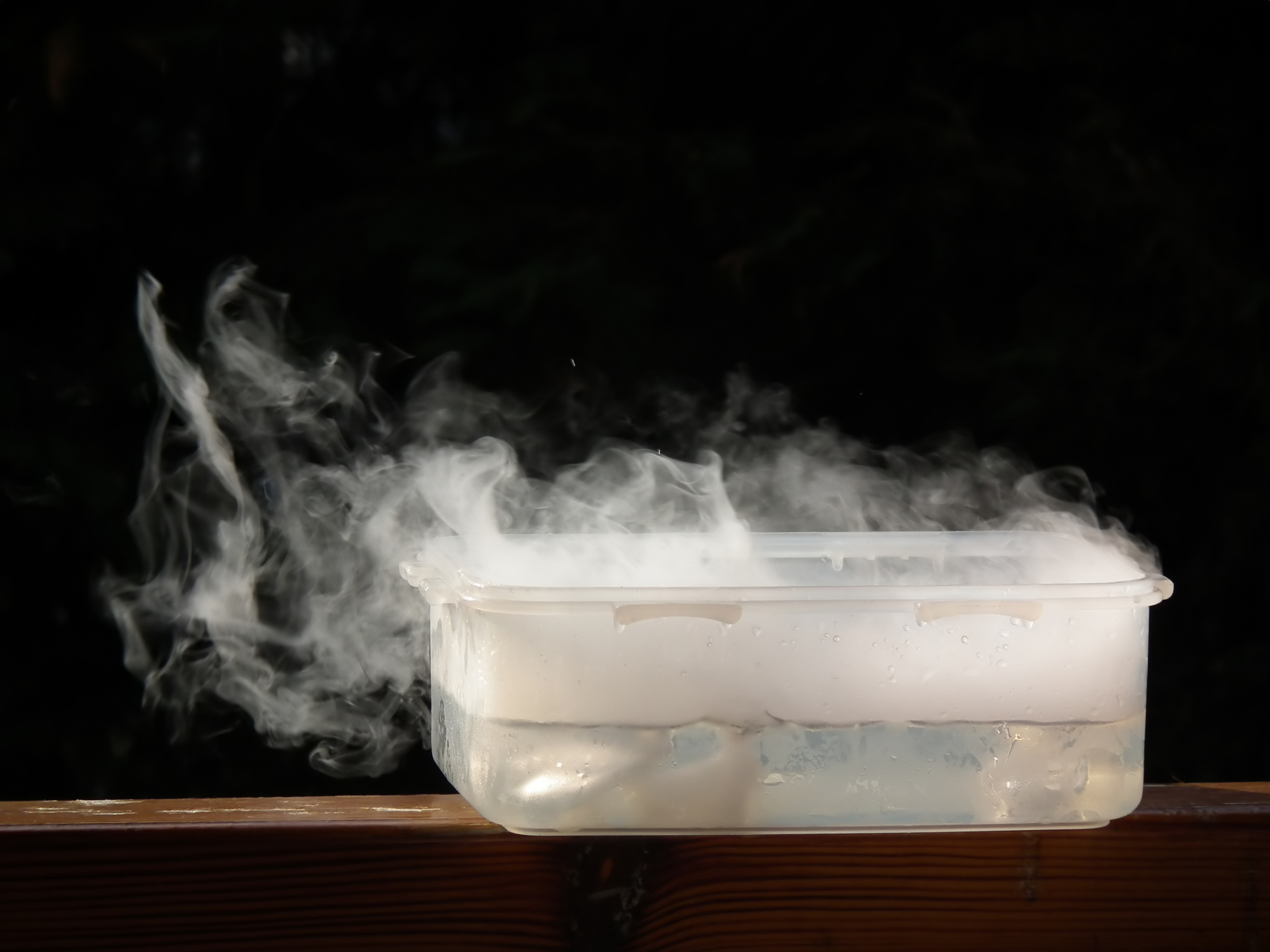You’ve probably either heard of this strange phenomenon or experienced it yourself: ice that can burn you. While this may seem initially counter-intuitive, dry ice can indeed burn your skin, but probably not in the way that you think.
When you think of ice, what probably first comes to mind are the cold opaque cubes produced from your freezer or ice machine. Dry ice though is actually quite different from this kind of ice and is rarely found hanging around your average kitchen. Commercially, dry ice is mostly used to preserve foods that need to be kept at a low temperature without the use of a mechanical device; for example, an ice cream cart uses dry ice to keep temperatures low enough to keep the product in a solid frozen state and to avoid the need for electrical output. But dry ice must be handled properly and with adequate protective gear or you can get a nasty and painful burn.
A burn from dry ice is not like a burn from a fire or a stove-top; instead, a dry ice burn is actually an acute form of frostbite. It quickly freezes the skin, and can cause damage just from a mere moment of contact. This is due, in large part, to the fact that dry ice is a solid form of the semi-hazardous chemical carbon dioxide. Since dry ice is made of CO2 and not water, its freezing point is lower than that of H2O, allowing it to become much, much colder than your typical water-based ice. While it’s not strictly considered a dangerous substance, you must go to certain lengths to protect yourself from the potential harm of dry ice. Avoid direct contact and keep in a well ventilated area so that when the dry ice sublimates into CO2, you don’t run the risk of asphyxiation.
In the last hundred years, dry ice has become primarily a synthesized substance, created in laboratories for commercial and industrial reasons, but dry ice is actually a naturally occurring substance – and not only on Earth. Photo-optics on Mars showed that polar ice caps consist partly of dry ice. While we once believed the ice caps found on Mars primarily consisted of carbon dioxide based dry ice, we’ve learned that the dry ice is more like a layer on top of water, preserving the liquid treasured beneath. Another example of naturally occurring CO2 based ice on Mars is dry ice storms. Much like our own thunderstorms, dry ice storms blow freezing carbon dioxide about in a thrashing blizzard that would be deadly to any exploring astronaut. While thoughts of terra-forming Mars are still centuries away, hazards like dry ice storms keep us thoroughly at bay from the thought of settling the red planet anytime in the near future.
 Corner Booth Blog | TundraFMP Restaurant Supply, News & Equipment Blog
Corner Booth Blog | TundraFMP Restaurant Supply, News & Equipment Blog




